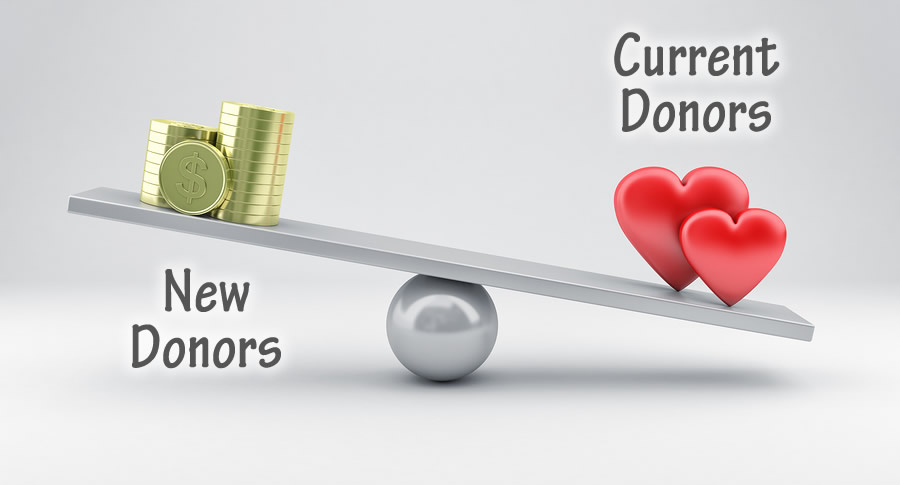
Whenever someone signs up to receive my emails, they’re encouraged to share their biggest fundraising challenge.
Here’s one such challenge recently shared with me that many organizations face:
The biggest challenge we are facing at the moment is with landing larger donations ($1,000-$5,000+), both in terms of attracting new, higher level donors and also identifying which of our current donors have the capacity to upgrade their gifts. We have a very loyal donor base, but most of our donors make smaller donations between $25 and $100. How can we attract new donors?
These are significant issues for many nonprofit professionals. Please know that you’re not alone.
Unfortunately, the notion that the grass is greener with new donors is a common mistake. In fact, your best donors are most often the ones you already have.
3 Questions Before You Seek New Donors
Here are three questions to ask yourself before you consider expanding your current donor base.
1. Did you ask for more?
Before we can tackle some of the more complex issues in the question, first ask yourself, “Did we ask for more?”
In other words, did you ask any of your loyal donors for larger gifts, either by mail, phone, or in person? If not, you probably know why they’re not giving more.
And if you begin expecting more from your donors, you need to give them more.
- First, thank them immediately after they make a gift of any size.
- Next, follow up and let them know how that gift was used.
- Then, do your best to engage your donors by giving them tours, inviting them to volunteer, or getting involved in other ways.
- Finally, only then, should you ask them for a specific amount, for a larger gift than they’ve given in the past.
As I mentioned, you can ask them by mail, phone or in-person. The more personal the ask, the more likely you are to get a larger gift.
2. Which donors have the capacity to upgrade?
Now let’s look at the second part of the question, “Which of our current donors have the capacity to upgrade their gifts?”
In this case, the person noted that, “We have a very loyal donor base … they make smaller donations between $25 and $100.”
So these are loyal donors that aren’t giving overwhelmingly large amounts. So my guess is that EVERYONE on your list could give more, with very few exceptions.
The fact is that the majority of donors don’t give the MOST they could, so the likelihood is that almost all of the people on your list could give more.
Which brings us back to point #1: Did you ask for more?
But on a more serious note, the question concerns the capacity of donors. Assuming you have not had your list screened for wealth, you may want to do so this year. This may give you the confidence you need to approach your donors for higher level gifts.
Wealth screening will uncover an individual’s assets including stock and property, what they’ve given to other organizations, and so much more, which will help you determine whether or not they might be able to give more.
3. Can we attract new, higher level donors?
Now we can circle back to the first part of the question about attracting new, higher level donors. Unfortunately, the idea that there are better donors “out there” is often a case of wishful thinking.
The first and most important step is to upgrade and retain the donors you have.
The idea that there’s a (simple) way to attract new, high net worth donors is a myth.
Donor acquisition is generally a slow and expensive process. And, although you always want to be attracting new donors, it’s more important to focus on the ones you have and make sure you can retain and upgrade them.
So, instead of focusing on new, higher level donors, focus on the loyal donors you already have. They’ll be much more valuable in the long run.
If you haven’t shared your biggest challenge recently, I’d love to hear about it in the comments section of this post (or join my list to have the chance to share it with me via email, if you don’t already receive my weekly newsletter).

Thank you for this. It confirms my thinking!
We are developing strategies to steward and cultivate our individual donor base. I find this post very timely and affirming. Thank you!